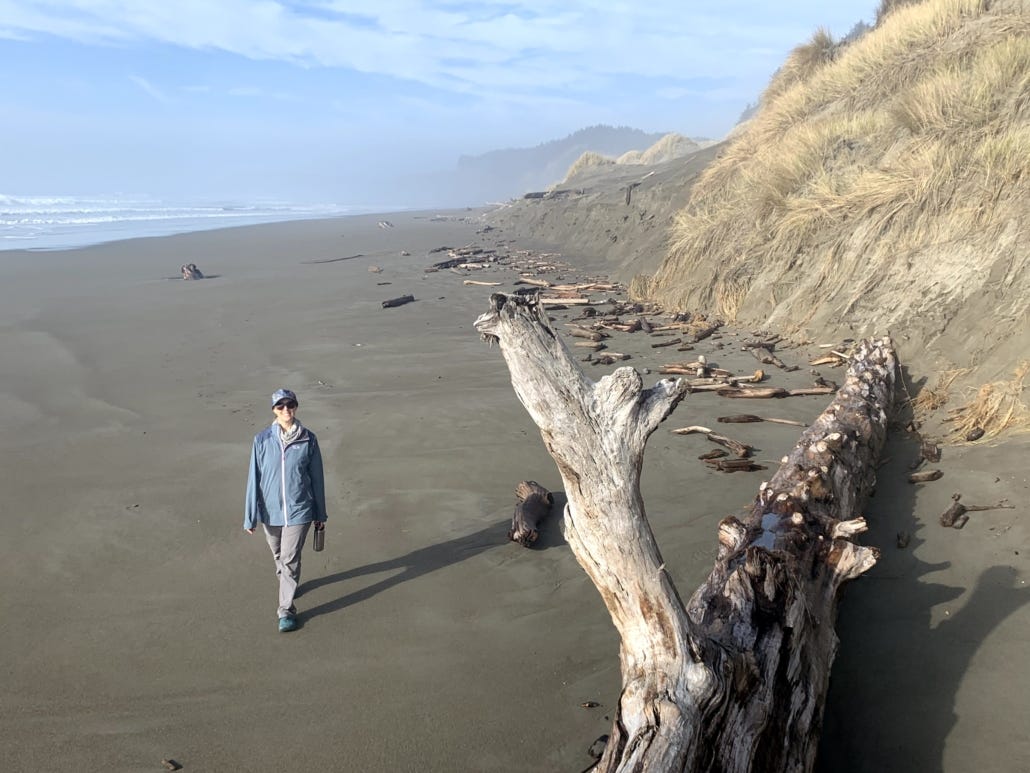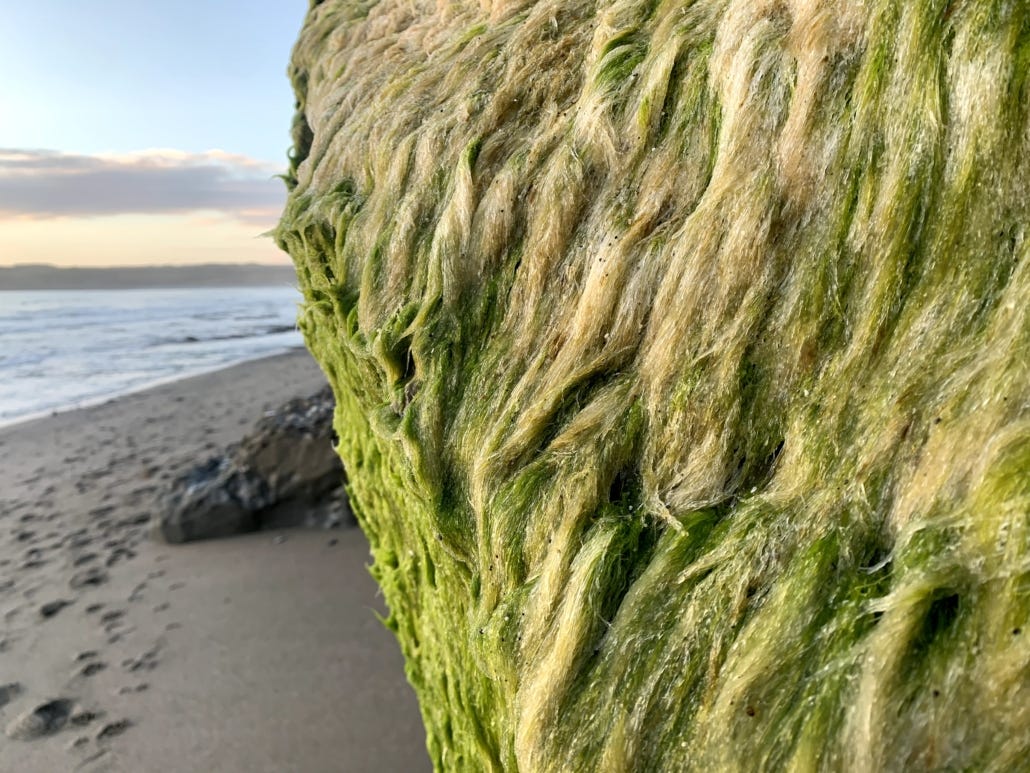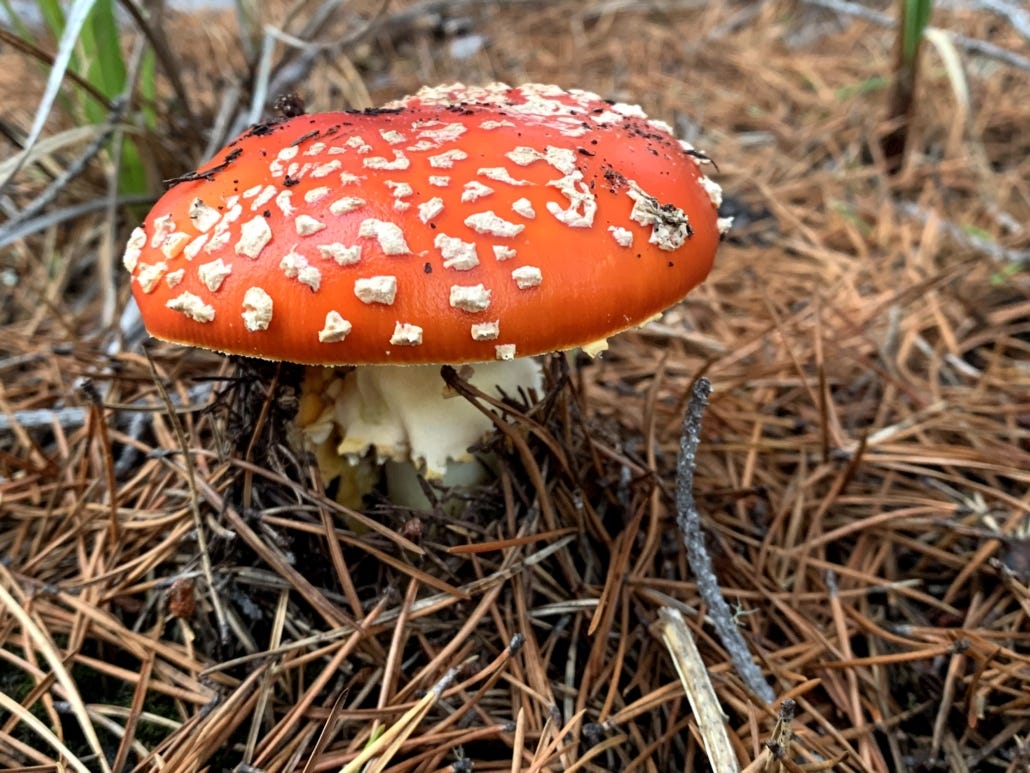Circling Back to the Oregon Coast and California Redwoods
Between the pandemic and smoke, we spent a biiit more time at home this year. (Anyone else?) Luckily, early December presented a (rare) clear weather window in the Pacific Northwest, so we packed the van and headed west to the ocean.
This wasn’t an adventure trip with Type 2 fun. Nope, this was a vacation, a chance to revisit areas we fondly remembered from kicking off our van trip in 2013.
We had simple goals as we drove over the Cascades: 1) turn our faces to the salty ocean spray during beach walks and 2) wander with necks craned back in the towering redwoods of Northern California.
Since covid disclaimers are all the rage, here’s ours: other than gas fillups, we were completely self-contained and alone for the entire week. Well, we rescued an injured seagull, but I don't think they can catch the virus...
For those Googling for specific hikes and campgrounds, skip ahead to the section.
The Beach
Travel in mountains stokes me with possibilities, but the beach acts as the ultimate grounding agent. Standing next to a massive body of water strips away day-to-day worries for both of us.
The southern Oregon coast is special because it’s a mix of treed areas and dunes, with steep cliffs interspersed with perfect sand beaches. We’d hike through an emerald green tunnel and then burst into the sun onto rolling dunes as far as we could see. The contrast is fantastic.
We leisurely skipped our way south in the van, stopping to camp, hike, or eat meals at vistas. Our only headache was toasted batteries - they’re five years past replacement age. New ones incoming soon.
Enough about the beach. Off to the redwoods!
The Redwoods
Time scales for redwood trees are too long for my brain to really grasp. Take the 1,500-year-old Big Tree in Prairie Creek Redwoods State Park as an example: when colonialist settler loggers first arrived in the 1850s, the tree had lived 90% of its current life. Somehow it survived the axes and is part of the 5% of remaining old-growth redwoods.
At 286 feet tall and 25 feet in diameter, the footprint is a fair portion of most houses and is as tall as a 30-story building. According to The Hidden Life of Trees, if humans were able to digest wood, one that large could feed us 3,000 calories a day for our entire lives.

Next to such majestic, old beings, humans seem small and short-lived, skittering about our frenetic little lives in the time a redwood grows a few more inches in diameter. Hiking beneath them feels like traversing nature’s cathedral, a quiet, reverent place where anything over a whisper feels rude.
One fascinating aspect of redwoods is the ability of their seeds to sprout on the stumps of their fallen forefathers. The little seed taps into the root system of the elder tree, gaining access to the vast subterranean network of nutrients. Tree lottery winner! The symbiosis of the trees is clearly apparent, with the gigantic snags often circled by their offspring.
Since there is no possible way to fully capture the coast and redwoods in words, I’ll end this here. Instead, below are some of my favorite photos from the trip, which of course don’t capture it either.
Resource List: Campgrounds and Hikes
First, a quick list of our favorite campgrounds and hikes on the Oregon Coast and California redwoods during our trip.
A note to van lifers: While we usually boondock camp, most coastal property (other than the entirely-public beach) is private. I was happy to pay for the pleasure of empty campgrounds with beach access.
I noticed that iOverlander moderators have closed many camping spots due to overuse and complaints from locals. For an impacted area like the coast, I think paying for a site is the way to go. We can boondock camp in the desert and wide-open national forests!
For summer, book six months ahead of time for the coast and the redwoods. I prefer the off-season. Sure, the weather is iffy and it gets dark early, but there are ZERO crowds.
Oregon Coast (from Waldport to CA border):
Tillicum Campground: campsites overlooking the massive beach south of Waldport. For $25 a night, you get a million-dollar view. The beach offers endless walking opportunities.
Alder Dunes Campground & hike: a secluded spot north of Florence with a 6ish-mile hike from camp through tree tunnels and over dunes to an empty beach.
Tahkenitch Dunes hike: this hike spends a mile deep in the coastal rainforest before bursting out onto the dunes. Mushrooms were everywhere! For reference, there’s a campground at the trailhead, though it was closed.
Cape Blanco hike: Oregon’s westernmost point! The lighthouse is cool, but my favorite part was getting down on the beach and wandering through all the giant driftwood logs. We didn't camp here, but there's a state park as well.
Northern California Redwoods:
Florence Keller County Park: most county parks resemble parking lots, but we pulled into this gem north of Crescent City to avoid dark, foggy conditions and WHAMMO were in tall trees with secluded spots. Many reviews say it’s the place to go during peak tourist months when everything books up.
Prairie Creek Campground: a stunning setting in the redwoods that must be absolute mayhem when it’s busy. In the off-season, it was quiet and provides access to many loops in the park.
John Irvine to Fern Canyon to Miner’s Ridge hike: try this ridiculously awesome 12-mile hike for variety. Miles and miles beneath 250-foot redwoods, then down into a canyon with walls covered in ferns, and then along a beach, where we saw Roosevelt Elk (they sport 4’ antlers, whaat). From there, you loop back through redwoods. A top-10 hike for me.
Prairie Creek/Foothill/Circle/Cathedral Trail hike: all manner of options available here, but this 5-mile option goes by the Big Tree mentioned above plus other giant redwoods, overlooks spawning salmon habitat, and gives you a chance to see elk in the prairie.
Note: stop and wander down any of the short signed trails off the Newton B. Drury Parkway. Anywhere in the redwoods is worth seeing!
Enough chit chat. Photos, go.
























